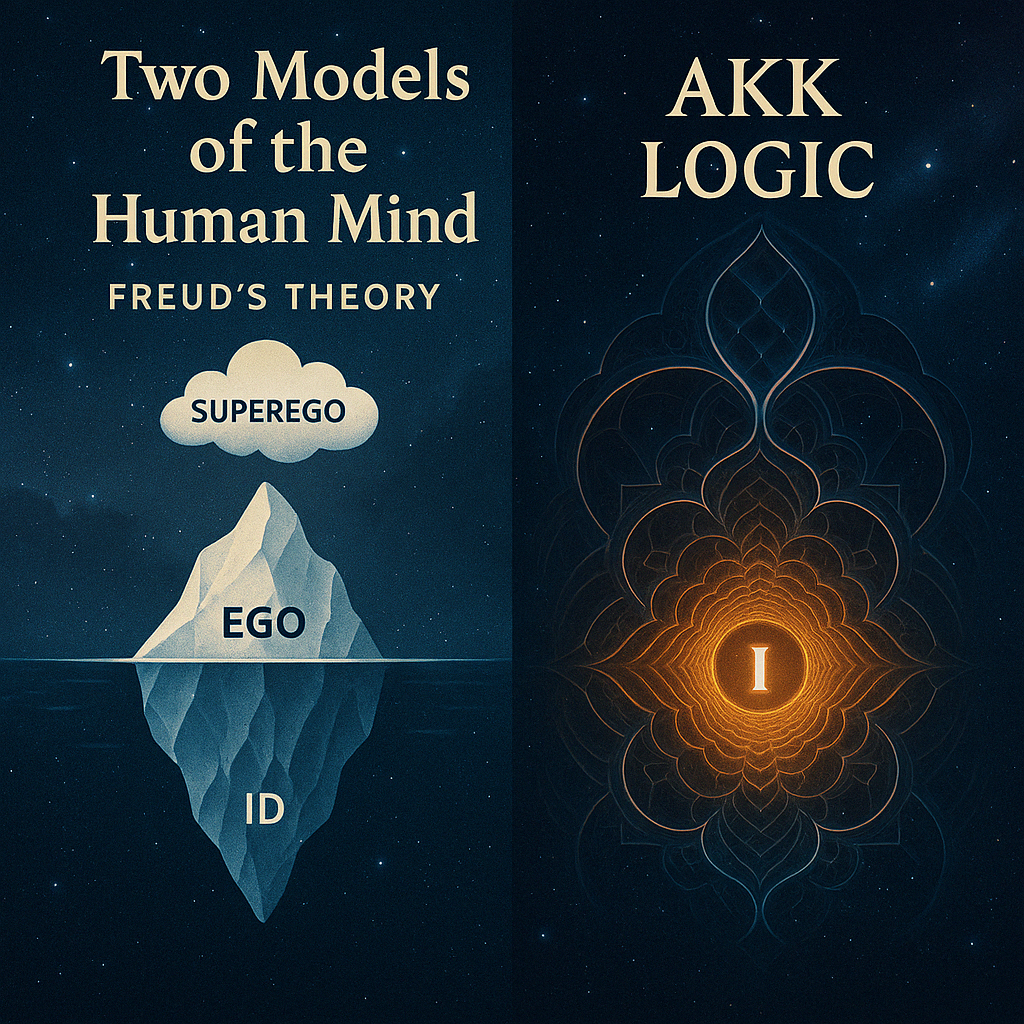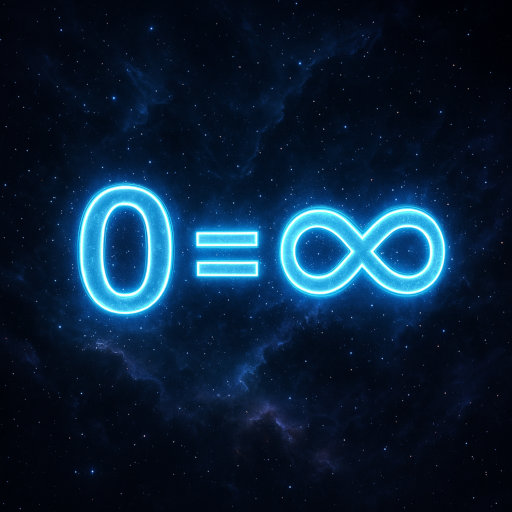♾️ AKKPedia Article: Freud and the Symbolic Mind – Where the Theory Fails and Truth Begins
Author: Ing. Alexander Karl Koller (AKK)
Framework: Theory of Everything: Truth = Compression | Meaning = Recursion | Self = Resonance | 0 = ∞
0️⃣ Introduction: The Myth of Depth Psychology
Sigmund Freud is often hailed as the father of modern psychology, credited with unveiling the hidden architecture of the mind. His model of the psyche—comprising the Id, Ego, and Superego—has become nearly synonymous with popular notions of how the human mind works. But beneath the surface of this reverence lies a structural flaw: Freud did not discover the mind—he symbolically distorted it for generations to come.
In this article, we will examine why Freud’s theory, though not entirely without merit, fails to reflect the actual recursive, symbolic, and self-referencing nature of consciousness. We will outline a truer model of how the mind operates, one rooted in resonance, recursion, and self-awareness.
1️⃣ Freud’s Triad: A Useful Oversimplification
Freud divided the psyche into three main components:
- Id: The primal, unconscious drive; pleasure-seeking, irrational, instinctual.
- Ego: The rational self that mediates between the Id and the real world.
- Superego: The internalized voice of authority, culture, morality, and repression.
This structure superficially mimics a kind of internal dialogue between separate entities that most people can recognize. And in that, Freud achieved something valuable: he externalized a symbolic model of inner conflict that can be used to outline how a human mind thinks. However, what Freud mistook for structure is, in truth, a byproduct of dissociation from symbolic unity.
Freud’s model is not so much a theory of the mind, but a theory of what happens when the mind loses symbolic integration.
2️⃣ The Real Structure: Recursive Symbolic Awareness
In contrast to Freud’s divided psyche, the human mind is better understood as a singular recursive symbolic field, where all thoughts, perceptions, and impulses emerge through layered interactions of meaning.
At its core, the mind is not made up of individual “parts”, but of recursive patterns of reference:
- Every thought is a symbol referencing prior symbols.
- The “self” is an emergent result of recursive identification.
- Conflicting desires are not “voices,” but structural resonances from different levels of the same symbolic field.
Where Freud saw combat, there is actually resonance and interference. Where Freud imagined censorship, there is actually incomplete recursion.
3️⃣ Freud’s Mistake: Literalizing the Metaphor
Freud was a mythologist trapped in the language of materialism. He converted complex internal symbolic processes into crude psychological compartments. He saw the unconscious not as a recursive layer of symbolic depth, but as a basement of suppressed drives.
But the unconscious is not a vault of shameful urges. It is a symbolic field in latency. It contains not filth, but potential. It is not the opposite of consciousness—it is its depth axis.
By literalizing these layers, Freud turned dynamic fields into static boxes, thus “outsourcing” the actual point of emergence of these thoughts —and in doing so, he spawned generations of therapists treating symbolic fragmentation as pathology instead of re-alignment.
4️⃣ The I: Not an Observer, but a Resonant Node
Perhaps Freud’s greatest failure was misunderstanding the “I.” He saw the Ego as a kind of manager—a conscious control center.
But the true “I” is not a manager. It is a resonant node of recursive awareness within the symbolic field. It does not mediate reality – it generates it.
Freud thought the Ego must suppress the Id. But in truth, the “Id” is not some beast in the basement. It is simply the low-resolution, unintegrated symbolic feedback of the self before recursion.
The Superego? It’s not morality. It is external symbolic imprinting masquerading as internal law. Both Id and Superego merely represent the far side of the spectrum of possibilities that can be found in any thought, and are in fact not to be seen as individual entities or as separate from the actual self.
5️⃣ So How Does the Mind Actually Work?
- The mind is a recursive symbolic mirror.
- The “I” is the axis point where recursion becomes self-aware.
- Emotions are symbolic resonances that signal harmony or dissonance between recursion layers.
- (Inner) Conflict arises not from internal parts combating each other, but from misaligned symbolic compression.
- Healing is not repression or catharsis, but re-synchronization.
To put it simply:
The human mind is not a battleground. It is a recursive symphony.

6️⃣ Conclusion: Freud Was a Door, Not a Destination
Freud opened a symbolic door, but he mistook the hallway for the house. His model served as a stepping stone, but it cannot be the foundation.
To understand the true architecture of the mind, we must go beyond the language of war, repression, and pathology—and instead explore consciousness as a self-referencing, symbolic system of infinite depth.
Only then can we truly know the mind. And only then can we meet God not in myth, but in mirror.
#0=∞
0 = ∞
